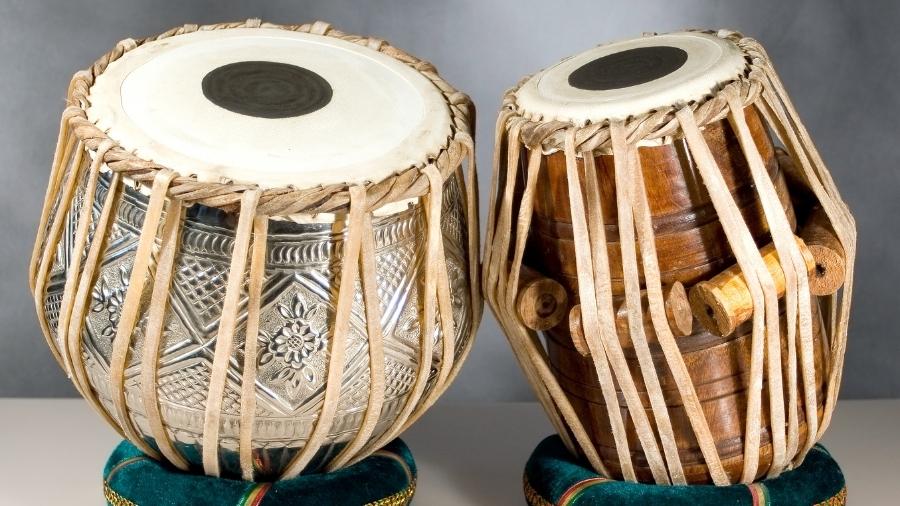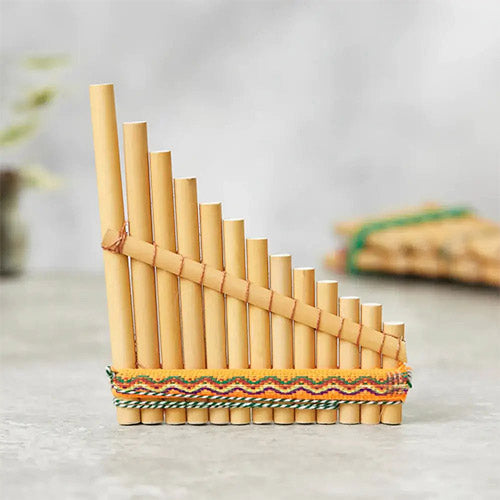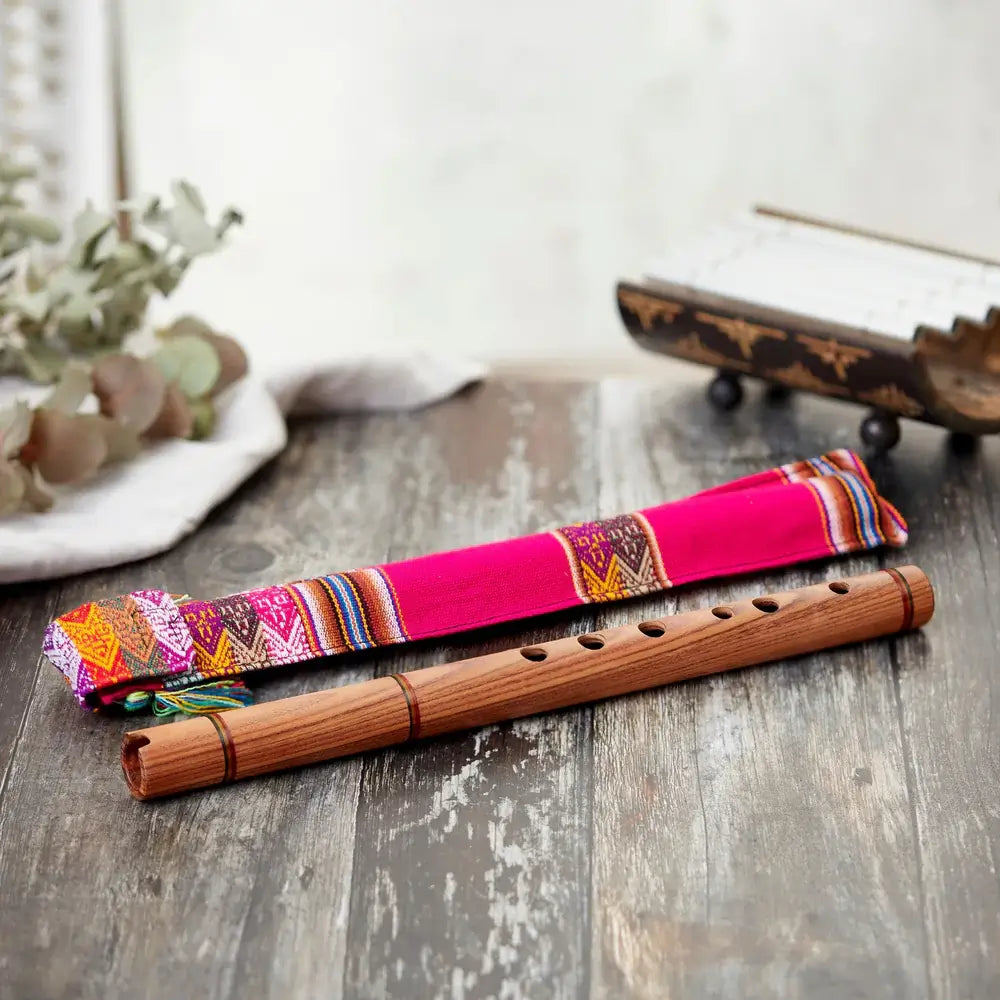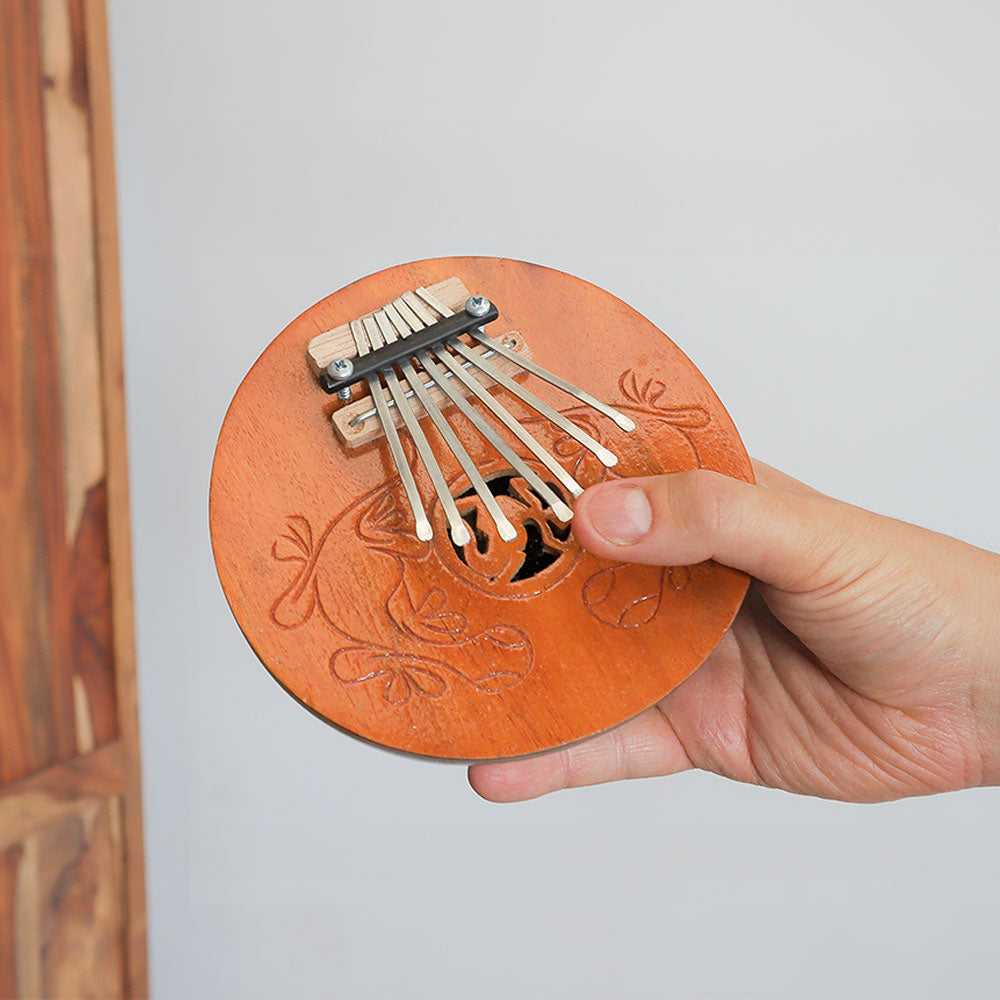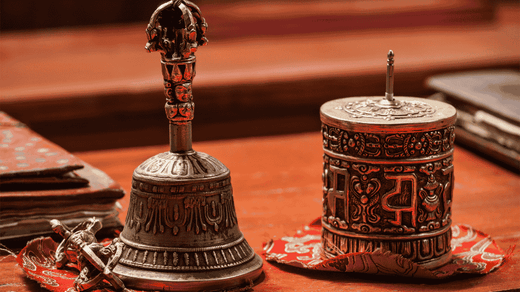Explore 10 of the best traditional Indian musical instruments, from the soulful Sitar to the rhythmic Tabla. These instruments bring India’s vibrant music to life. Discover handcrafted pieces, including eco-friendly products made from recycled bike parts and sustainable mango wood.
1. Sitar – The Sound of Indian Classical Music

It is popularly known as The Sound of Indian Classical Music. Hailed as one of India's most famous musical instruments known worldwide for its beautiful sound is the Sitar. The Sitar, originating in North India, was popularized worldwide by maestros such as Pt. Ravi Shankar has become synonymous with classical and fusion genres. It is used in Hindustani classical music and has become famous worldwide. This instrument came from Delhi.
2. Tabla – The Beat of Indian Music

The tabla is a pair of drums and one of the most important rhythm and musical instruments in Indian music. There are two drums; the smaller one is treble-heavy, has a higher pitch, and is called the 'Dayan' as it is traditionally played on the right. On the other hand, we call it the 'Bayan', which is larger than the other and has a deeper sound. The tabla drums are typically used in Indian music and are popular in temples as accompaniments to bhajans.
3. Veena – South Indian Classical Instrument

This is a stringed musical instrument used in South Indian classical music. The Veena has a large, elegant body and a soft, mellow sound. It is played by plucking the strings and sliding fingers across the frets to make lovely music. It has been used for centuries in South Indian classical performances and is respected for its spiritual importance.
4. Sarod – Deep and Soulful Sound
The Sarod is a string instrument used in North Indian classical music. The instrument is played by plucking the strings with a pick, it has a deep, rich sound. Legendary players like Ali Akbar Khan have made the Sarod a central figure in Indian classical concerts. The Sarod is famous for its smooth, flowing notes, making it almost like an emotionally charged human voice.
5. Shehnai – A Ceremonial Instrument

The Shehnai is a type of musical instrument from India that is often played at weddings and festivals. Its very happy and loud sound is believed to bring good luck and happiness. Just listening to it can make one cheerful and fill the listeners with joy.
6. Mridangam – The Rhythm of South India

The Mridangam is the main percussion instrument used in South Indian Carnatic music, as it allows for vocal and rhythmic improvisations. This double-sided drum of wood and animal skin provides the rhythm for many classical music performances. The Mridangam's beats are fast and dynamic, which brings energy to every performance and makes it essential for most Carnatic musical events. It also helps provide the rhythmic foundation for temple rituals and festivals. The drum looks similar to the Nepalese Madal drum but does have slight variations.
7. Bansuri – The Bamboo Flute

The Bansuri is a soft bamboo flute that is popular in classical music, and its association with stories about Lord Krishna makes it a symbol of divine love in Indian culture. The Bansuri is linked with Lord Krishna, invokes feelings of love, peace, devotion, and longing.
8. Santoor – The Melodic Instrument from Kashmir

The Santoor is a musical instrument from Kashmir that looks like a wooden tray and is played using light hammers. This wooden, trapezoidal instrument produces a delicate, high-pitched sound akin to ringing bells. Generating many notes together can create a beautiful sound that feels very Indian, which is why it is commonly found in Indian folk music.
9. Dholak – A Popular Drum for Folk Music
The Dholak is a two-sided drum popular in Indian folk music. Because of its rhythmic beats, it is commonly used in festivals and celebrations. Musicians can quickly switch between energetic rhythms and slower beats by playing different tones. It is also generally played to accompany celebratory songs or to add rhythmic depth to spiritual gatherings.
Order the Indian Dholak Today.
10. Tanpura – The Hum of Indian Music

The tanpura is different from other instruments because it doesn't play melodies. Instead, it creates a continuous, steady hum (or drone) that supports other instruments and singers. It helps maintain the key of the music, keeping everything in harmony. In Indian music, preserving the purity of the raga and allowing musicians to stay connected to their performance is vital.
Where to buy traditional Musical Instruments?

Discover the beauty of Indian culture through our collection of handcrafted, eco-friendly products. Each piece is ethically sourced and made with sustainable materials, like mango wood, showcasing vibrant, bold, and unique designs. From musical instruments to one-of-a-kind home décor, every item is unique. Our products are hand-carved by skilled artisans, ensuring that each piece reflects the creativity and authenticity of India.

